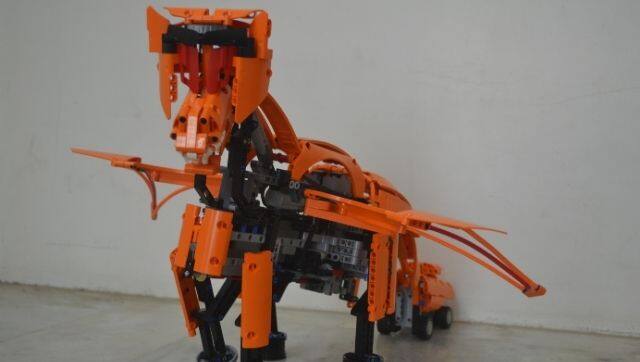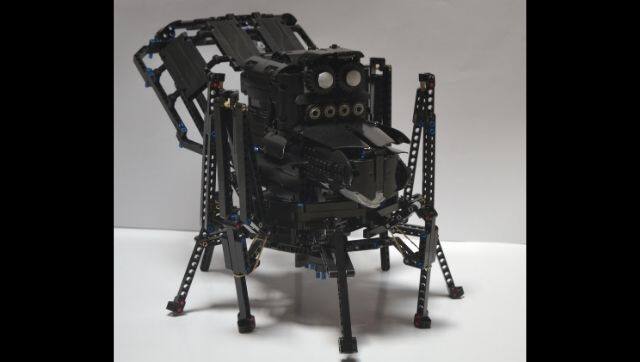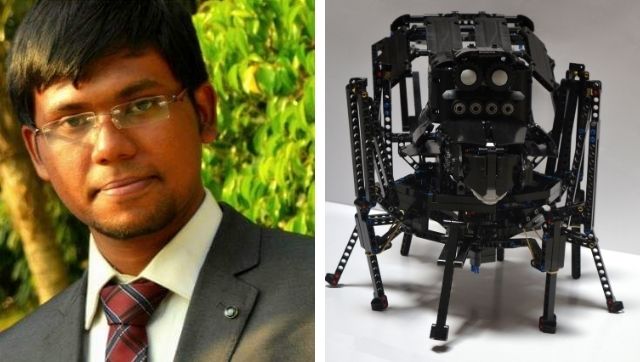As a prosthetic dentist, Dindigul-based Vishnu Manohar looks for both appeal and function in a product, such that it ought to be aesthetically pleasing, yet do something useful. So, when he designed a prototype of a bionic arm made entirely from plastic building bricks, popular simply as Lego, it meant making a model that is as functional as it is appealing. Manohar was fascinated by Lego through his childhood, and his interest in the building bricks rekindled when he used them to create denture impressions for a patient who had difficulty in opening their mouth fully. His passion has now led him to design a prosthetic arm devoid of cumbersome sensors or robotics common to the artificial limbs available in the market. Instead, it uses simple mechanics to perform basic functions of extension and flexion of the hand: string and spring make the arm move. With a patent pending (at the time of this report) Manohar is reluctant to share much about the design involved in created this Lego arm, but he points out that while large sums of money would have to be spent to procure a robotic arm or an arm which has very little function but is visually attractive, this design would not only be cost effective, but assist an amputee in carrying out certain basic functions as well. The Lego arm is designed in a manner that after wearing it, an individual will be able to extend the hand, hold an object, lift it up and extend it again to release the grasp. [caption id=“attachment_9166291” align=“alignnone” width=“640”]  Manohar’s fire dragon is a remote controlled model that can walk, flap its wings and move its head up and down.[/caption] What’s more, he adds, “the hand is going to be delivered in a box as different pieces which can be assembled just like a Lego set.” The dentist confesses that there are, of course, long-term difficulties attached to mass production of the Lego arm, one of the primary ones being the practical challenge of obtaining spare parts in India. Yet, he is determined to keep working on and modifying his design, and is now in the process of creating a 3D printed model of the bionic arm. The next step for him is to make these parts in the ‘acrylic material used for dentures’ to produce ‘an easily affordable prosthetic arm which not only looks like a hand but can actually function to grasp objects and improve the life of amputees.’ Having a lifelong interest in Lego, adulthood led Manohar to challenge himself and push his creativity into making more complicated models. His quest has led him to put together an auto rickshaw, Aragog, the mammoth spider from Harry Potter, cars and a Tata 1613 lorry which can drive, steer and change gears. One of his most prized creations, he notes, is a fire dragon, which is “almost 1.5-2 feet, in length so it can walk, flap its wings, move its head up and down,” he describes the model. The Lego bricks are equipped with motor sensors, which have allowed him to make a fully remote-controlled object. [caption id=“attachment_9166301” align=“alignnone” width=“640”]  The model of Harry Potter’s Aragog created out of a Lego set.[/caption] The arm was born out of a similar need to create something complex and efficient, and he stumbled upon a Lego arm made by a Spanish university student, David Aguilar. Born without a right forearm, Aguilar started building artificial limbs for himself out of Lego bricks since the age of nine. Over time, he has been able to build a robotic arm that operates on an electric motor and can bend at the elbow joint enabling him to grab and let go of an object. Others like Aguilar have also taken to building arms out of Lego for supplying them to those with a similar physical disability at cheaper prices.
Today, Manohar emphasises that there is an increasing need to introduce children to these blocks because according to him, humans are by nature inclined to build and create. He says that developing this hobby can contribute to enhancing fine motor skills, coordination, and the ability to take up a project from planning to execution and seeing it through to completion. With this in mind, he also tracked down Rebrickable, a website that functions as an index of alternate builds from the parts one might already have. His advice to parents: “Invest in a Lego or any building model set instead of buying a mobile phone or tablet for your kid.”


)
)
)
)
)
)
)
)
)



